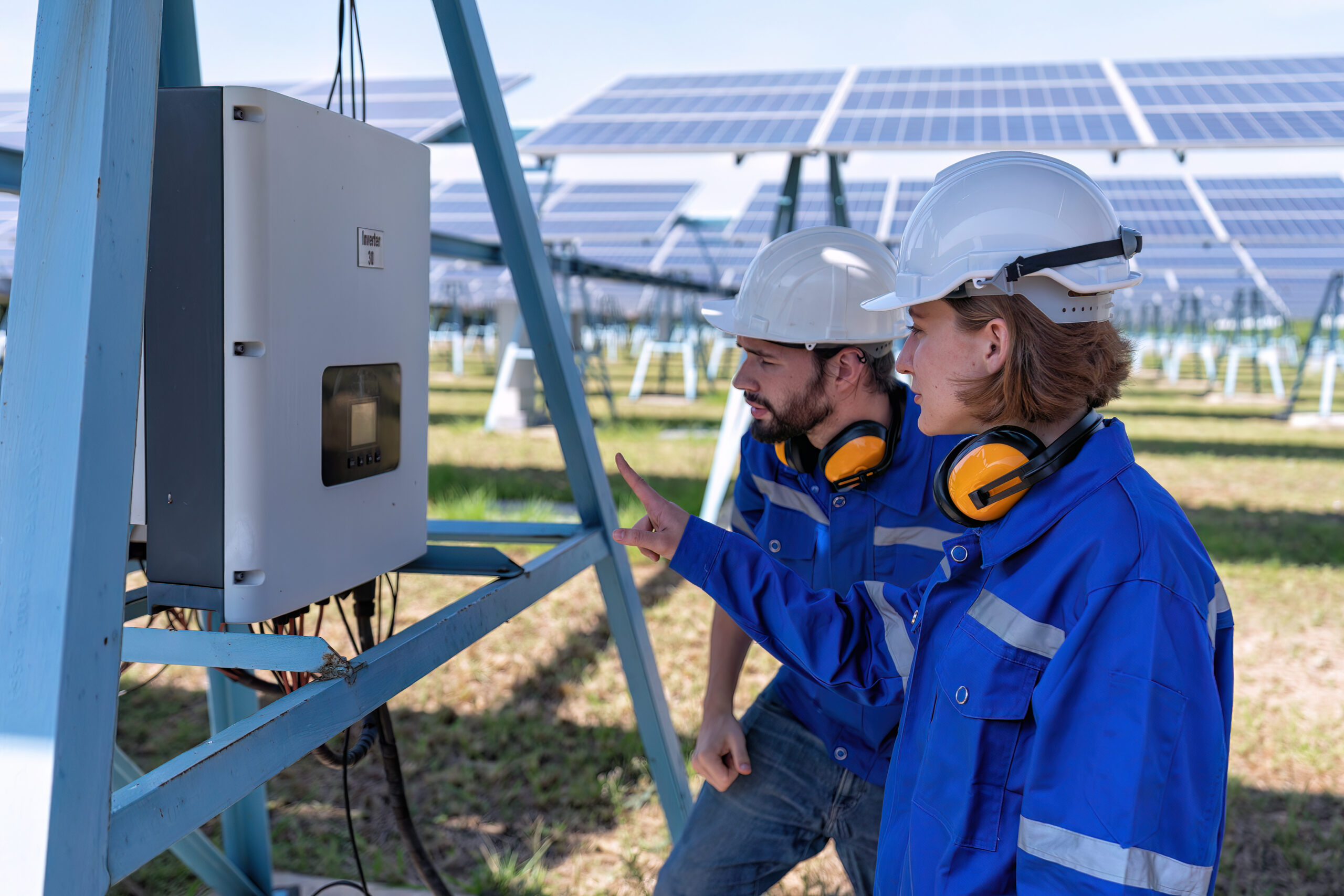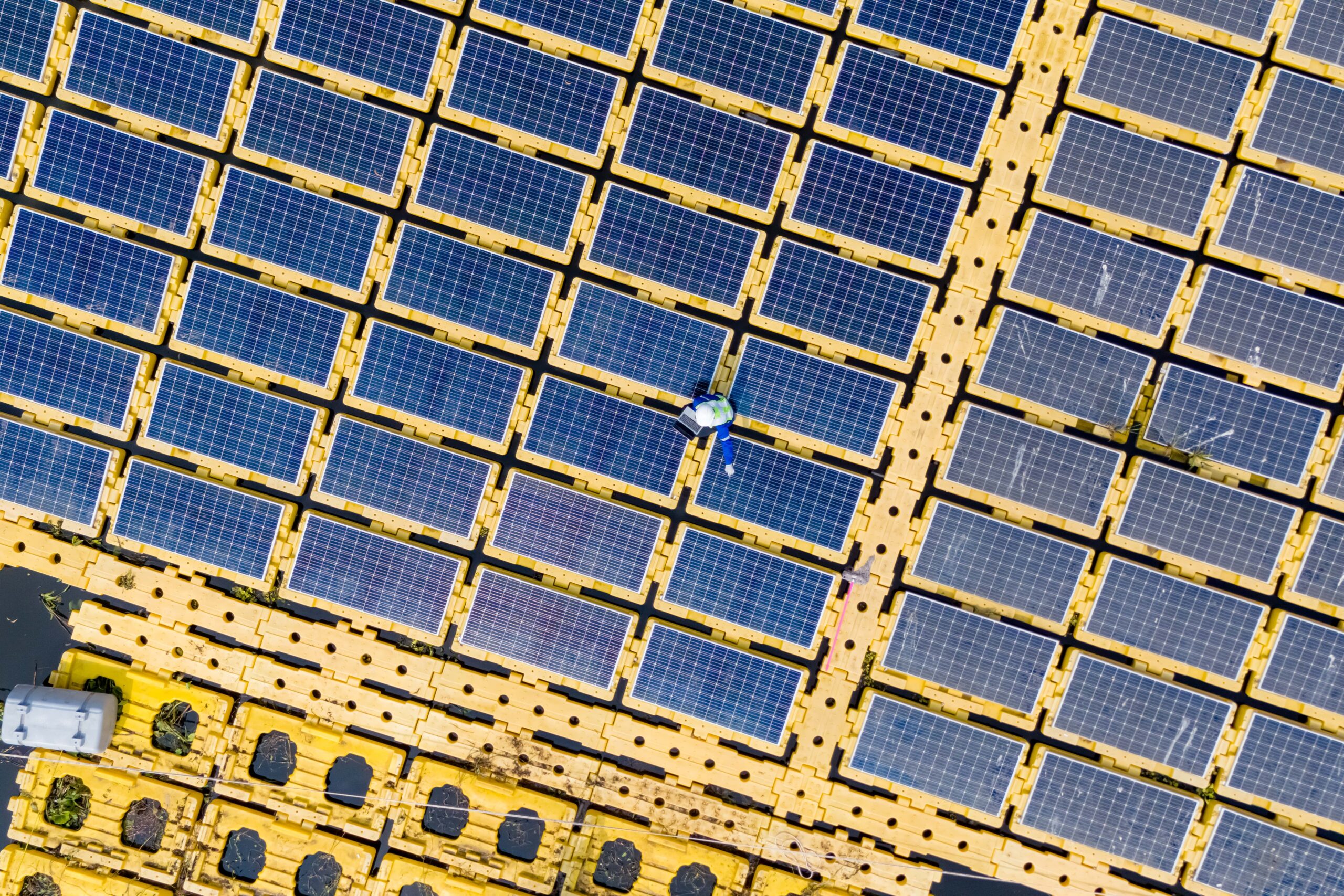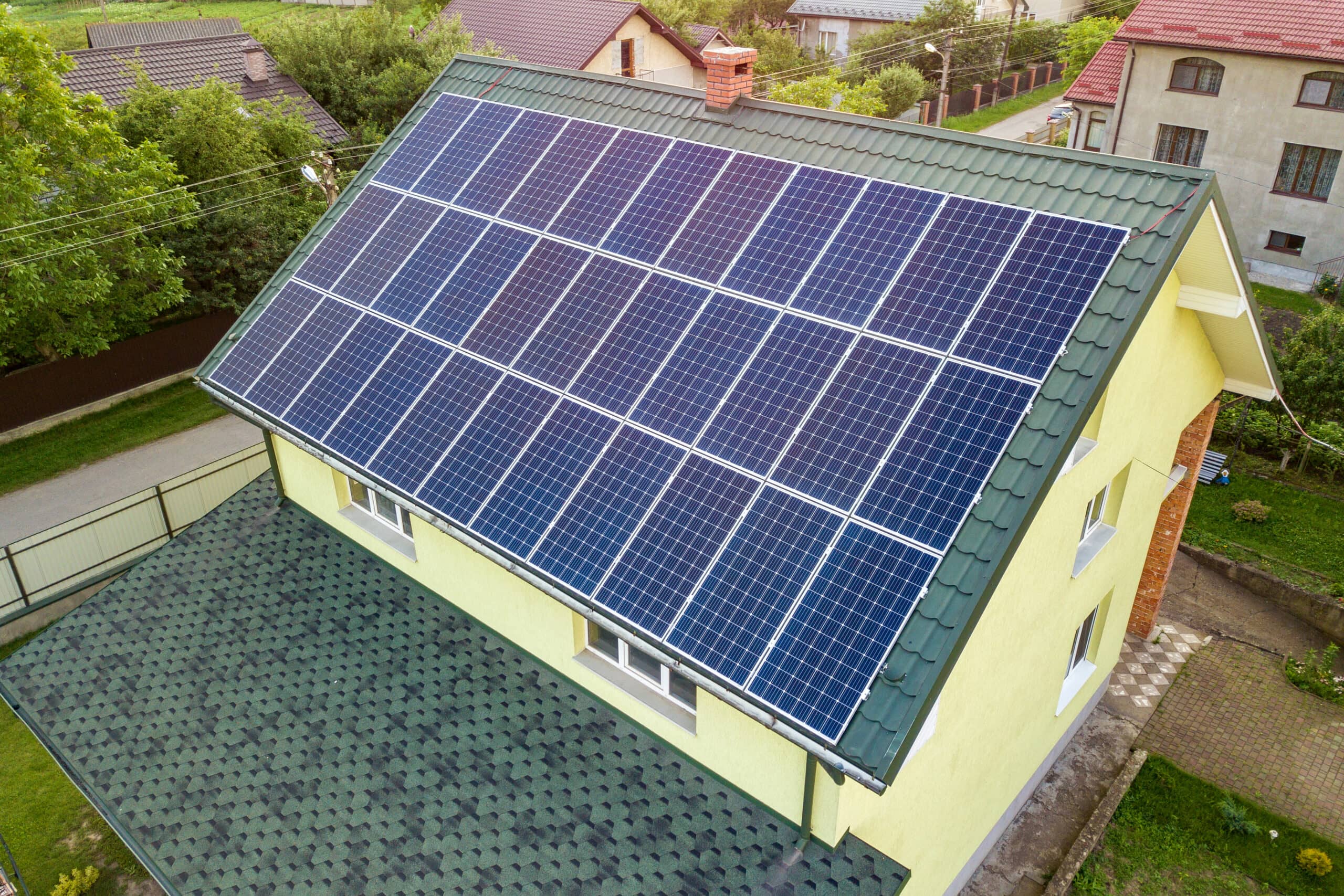Solar energy has gained widespread attention and adoption due to its renewable nature and environmental benefits. Solar power is a promising solution as the world shifts towards sustainable energy sources. A solar power system comprises several key components, each vital in efficiently harnessing and utilizing solar energy.
Among these components, the inverter holds a significant position. The inverter serves as the linchpin of a solar power system, facilitating the conversion of direct current (DC) electricity generated by solar panels into alternating current (AC) electricity.
This conversion is crucial as AC electricity is the standard form used in households and is compatible with the electrical grid. Therefore, understanding the role of the inverter is essential in comprehending the functionality and benefits of a solar power system.
Solar panels generate electricity through a process known as the photovoltaic effect. When sunlight hits the solar panels, the photovoltaic cells within the panels absorb the light energy and convert it into electrical energy. This conversion results in the production of direct current (DC) electricity. DC electricity is characterized by a unidirectional flow of electric charge, making it the primary form of electricity solar panels generate.
DC electricity plays a crucial role in the initial stages of solar power generation. Since solar panels inherently produce DC electricity, this form of electrical energy is essential for the functioning of the solar power system. However, household appliances and most electrical devices operate on alternating (AC) electricity. This is where the inverter, as discussed earlier, comes into play. The inverter’s role in converting DC electricity from solar panels into AC electricity ensures compatibility with household appliances and the electrical grid.
Solar inverter plays a crucial role in solar power systems by converting the direct current (DC) electricity generated by solar panels into alternating current (AC). This conversion is essential because most household appliances and electrical systems operate on AC electricity. By transforming DC to AC, the inverter ensures that the electricity produced by solar panels is compatible with home appliances and the electrical grid.
AC electricity is necessary for household use due to its widespread compatibility with various devices and appliances commonly found in homes. Unlike DC electricity, which flows in one direction, AC electricity alternates direction periodically. This alternating current efficiently powers most household electronics, lighting, heating systems, and appliances.
Moreover, AC electricity is the standard electricity used in the electrical grid. By converting solar-generated DC electricity into AC, the inverter enables seamless integration of solar power into the existing grid infrastructure. This compatibility ensures that excess solar energy can be fed back into the grid, promoting renewable energy utilization and reducing dependence on traditional fossil fuel sources.
The inverter’s function of converting DC to AC electricity is vital for making solar energy practical and accessible for household use, ensuring compatibility with home appliances and the broader electrical grid.
There are three main types of solar inverters: string inverters, microinverters, and power optimizers, each with its own set of advantages and disadvantages.
String inverters are widely used due to their centralized conversion approach, where multiple solar panels are connected in series to a single inverter. They are cost-effective and straightforward, making them popular for large-scale installations. However, they are susceptible to shading issues, and if one panel underperforms, it can affect the performance of the entire string.
On the other hand, microinverters operate at the individual panel level, converting DC to AC directly on each panel. This approach optimizes energy production by mitigating shading issues and allows for monitoring of each panel’s performance. Although microinverters offer enhanced efficiency, they come at a higher initial cost per panel and may require more complex installation than string inverters.
Power optimizers are another type of inverter that works in conjunction with string inverters to enhance performance by optimizing the power output of each panel. They offer improved energy harvest and monitoring at the panel level, providing a middle ground between string inverters and microinverters. However, they come with an increased upfront cost compared to standard string inverters.
When comparing the efficiency, cost, and application scenarios of these inverters, it’s essential to consider the specific needs of the solar installation. Microinverters and power optimizers are more efficient than string inverters, especially in scenarios with shading or panel mismatch issues. While string inverters are cost-effective and suitable for unshaded areas, microinverters are ideal for installations with shading challenges and individual panel monitoring needs. Power optimizers are best suited for enhancing the performance of string inverter systems, particularly in partially shaded conditions.
The choice of solar inverter depends on factors such as efficiency requirements, shading conditions, budget constraints, and monitoring preferences. By understanding the differences and considerations for each type of inverter, individuals and businesses can make informed decisions to optimize the performance of their solar power systems.
Solar inverters offer a range of benefits that contribute to solar power systems’ efficiency, reliability, and performance. Let’s unravel how solar inverters optimize performance, ensure grid connectivity, and facilitate monitoring and maintenance.
Solar inverters play a crucial role in optimizing solar panel performance by converting the DC electricity generated by the panels into AC electricity suitable for homes and businesses. Inverters help maximize the solar system’s energy output by efficiently converting solar energy. This optimization ensures that the electricity produced by the solar panels is utilized effectively, leading to increased energy production and cost savings over time.
Inverters ensure a safe and reliable connection between the solar power system and the electrical grid. Grid-tied inverters synchronize the electricity produced by the solar panels with the grid, allowing excess energy to be exported to the grid or drawn from the grid when solar production is low. This grid connectivity enables solar power systems to operate seamlessly within the existing electrical infrastructure, contributing to grid stability and reliability.
Solar inverters play a crucial role in system monitoring and diagnostics, providing valuable insights into the solar power system’s performance. By monitoring parameters such as energy production, voltage, and system health, inverters help identify potential issues or inefficiencies.
This monitoring capability allows for proactive maintenance and troubleshooting, ensuring the solar power system operates optimally and maximizing its lifespan. Additionally, inverters enable remote monitoring, allowing users to track system performance in real time and address any issues promptly.
Solar inverters offer significant benefits that enhance solar power systems’ efficiency, reliability, and performance. From optimizing energy production to ensuring grid connectivity and facilitating system monitoring and maintenance, inverters play a critical role in maximizing the benefits of solar energy utilization. By understanding the importance of inverters in solar power systems, individuals and businesses can harness the full potential of solar energy for sustainable and cost-effective electricity generation.
Significant technological advancements in recent years have led to the development of solar inverters, which have improved solar power system efficiency, reliability, and performance.
One of the notable advances in inverter technology is the development of intelligent inverters. Smart inverters incorporate advanced monitoring capabilities, grid support functions, and communication interfaces. These intelligent inverters can communicate with the grid and adjust their output to support grid stability, making them essential components in modern solar power systems. Additionally, advancements in power electronics and control algorithms have enhanced the efficiency and flexibility of inverters, allowing for better integration with solar panels and grid systems.
The technological advancements in solar inverters have profoundly impacted the efficiency and reliability of solar power systems. Smart inverters, with their advanced monitoring and control capabilities, help optimize energy yield by ensuring that the solar system operates at its peak performance.
By actively managing the flow of electricity between the solar panels, the inverter, and the grid, smart inverters enhance system efficiency and maximize energy production. Moreover, these innovations contribute to the longevity of the solar system by improving system stability, reducing downtime, and enhancing fault detection capabilities.
Technological advancements in solar inverters, particularly the introduction of smart inverters and enhanced control features, have significantly improved the efficiency and reliability of solar power systems. These innovations increase energy yield and system lifespan and enable better integration of solar energy into the existing grid infrastructure. By leveraging these advancements, solar power systems can operate more efficiently, generate more clean energy, and contribute to a more sustainable energy future.
Wrapping up our discussion on solar inverters, it’s essential to highlight their crucial role in solar power systems. Inverters play a vital role in converting the direct current (DC) generated by solar panels into alternating current (AC) that can be used to power homes, businesses, and the grid. They serve as the bridge between solar panels and the electrical grid, ensuring efficient and reliable energy conversion.
The future of solar inverters appears promising in advancing sustainable energy solutions. As technology continues to evolve, we can expect further innovations in solar inverters that will drive greater efficiency, reliability, and integration with the grid. Solar inverters will play a pivotal role in promoting the widespread adoption of solar energy, contributing to a cleaner and more sustainable energy landscape.
Solar inverters are indispensable components of solar power systems, and their continued development and enhancement will be vital in accelerating the transition to renewable energy sources and achieving a more sustainable future.




